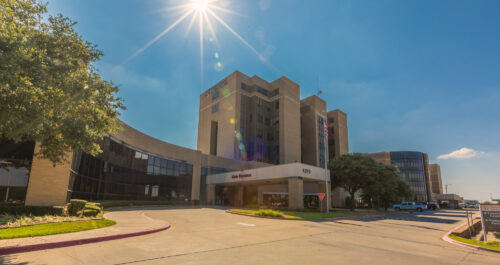Overview
Our specialists use advanced equipment to perform non-invasive tests for patients experiencing persistent or worsening pain. These tests help detect conditions such as carotid artery stenosis, aneurysms, renal and mesenteric artery stenosis, deep vein thrombosis, and issues related to dialysis access. We prioritize thorough evaluations for individuals with medical conditions like diabetes, hypertension, cardiac disease, stroke, high cholesterol, smoking history, or a family history of blood vessel diseases.
Common Diseases and Conditions
Over 40 million Americans are affected by venous disease, which occurs when the valves in your veins become weak, damaged or faulty. If your valves aren’t working properly, blood can begin to flow downward – away from your heart and into your veins – in between heartbeats. This backwards flow of blood results in pain and other complications associated with various vein conditions, ranging from mild to severe. Some common conditions include:
While DVT can be treated, it can also lead to a very serious and sometimes life-threatening condition known as a pulmonary embolus. This develops when blood clots in the deep vein break off and travel through the bloodstream to the lungs. Symptoms of blood clots in the lungs include:
- Chest pain
- Trouble breathing
- Coughing
- Fast heartbeat
- Excessive sweating
- Fainting
- Skin discoloration
- Sores
- Leg cramps or aches
- Heaviness of legs
If you believe you may be at risk for venous insufficiency, DVT, varicose veins, or another related condition, it’s recommended that you consult a physician as soon as possible. Our venous disease self-assessment can help point you in the right direction if you’re unsure.
Risk Factors for Venous Disease
Venous disease is a common disorder that affects the veins in the legs because of damaged valves and backward blood flow. There are a number of risk factors associated with venous disease – some that can be controlled and some that cannot. These risk factors include:
- Family History: Heredity is the number one risk factor for venous disease. For example, if your parents had varicose veins, you have an 89% chance of developing them.
- Gender: Women are three times more likely than men to develop venous disease. In addition, pregnant women are also at an increased risk due to all of the hormonal changes that occur during this time.
- Age: The risk of developing venous disease increases with age, so older individuals are at a higher risk. However, it can start as early as childhood.
- History of Blood Clots: Even after they have dissolved, blood clots (also referred to as deep vein thrombosis) can cause permanent damage to the vein or valves.
- Extended Periods of Standing or Sitting: The muscles in your legs keep the blood flowing away from your legs and towards your heart. However, prolonged periods of time without walking can decrease the movement of blood throughout your legs, causing the blood to pool as well as increased blood pressure.
- Obesity: Being overweight can put an increased amount of pressure on your veins.
If you think you’re at risk of venous disease, you should consult your physician as soon as possible for an official diagnosis. You can also take a self-assessment to gather more information prior to an office visit. Depending on your type of vein condition and its severity, treatment may be recommended to relieve symptoms and avoid further complications.
Prevention
Prevention is always the first line of defense, especially for those who have risk factors. You can reduce your chances of developing a vein condition by:
- Maintaining a healthy weight
- Exercising on a regular basis
- Not smoking
- Not standing or sitting for extended periods of time
And for some people who do develop a condition, the continuous use of compression stockings is enough to keep it under control. However, when the pain and inflammation of veins persists, medical intervention may become necessary.
If you’re interested in testing at the vascular lab at Hunt Regional, ask your doctor for a referral.
Services
At Hunt Regional’s vascular lab, our specialists perform non-invasive evaluations for patients with persistent or worsening pain. Our extensive list of vascular testing allows patients and referring physicians to get the answers they need. All of our evaluations are performed as outpatient procedures. This means that patients can resume normal activities on the same day of their evaluation.
- Extremity Arterial Duplex
- Segmental Pressures/PVR’s
- Ankle Brachial Index (ABI)
- Non-Invasive Extremity Venous Evaluation
- Venous Duplex DVT
- Dialysis graft surveillance
- Venous mapping for fistula creation (CABG)
- Venous Doppler Reflux Analysis
- Mesenteric Artery Duplex
- Abdominal/Pelvic Venous Duplex
- Aortoiliac Duplex for AAA
- Aortoiliac Duplex for Occlusive Disease
- Carotid Duplex U/S
Vein Self-Assessment
To take this quick assessment, simply read through and answer the five questions below. If you answer yes to any of the following questions, you may be at risk for venous disease, and it is recommended that you consult a physician.
Varicose veins are typically found on the legs and are blood vessels that have become swollen or twisted. Look for veins that are dark blue and stick out on your skin.
2. Do you experience any of the following vein symptoms?
- Leg pain or swelling
- Burning or itching skin
- Heavy, tired, or restless legs
- Skin discolorations
- Open ulcers on legs
- Restless Leg Syndrome
- Leg cramps
- Blood clots
- Neuropathy
3. Have any family members had varicose veins or been treated for vein disorders?
4. Do you sit or stand for long periods?
5. Have you had multiple pregnancies?
*This self-assessment is not a substitute for medical advice and care from your physician. Please see your physician if you have leg pain, numbness or discomfort.

